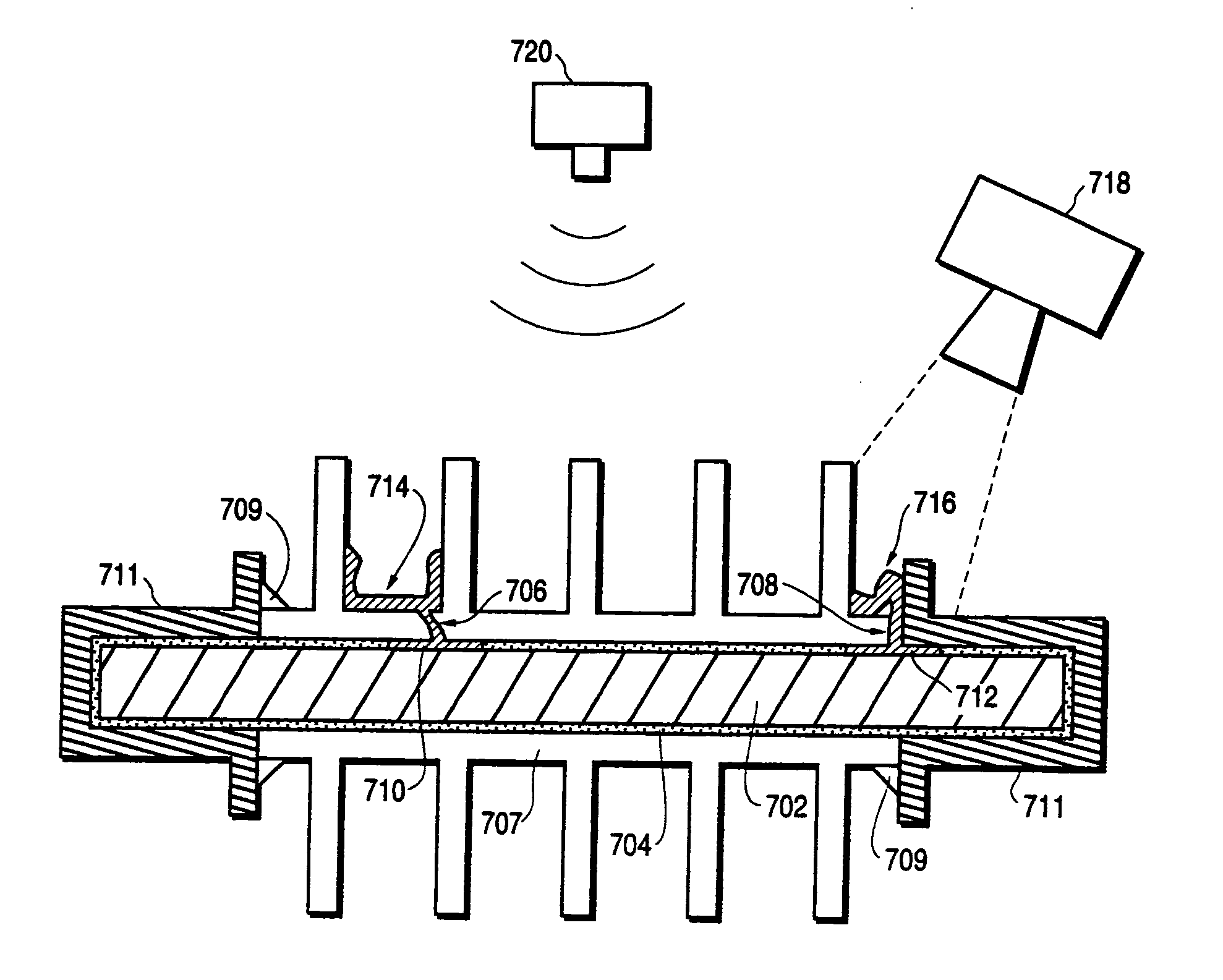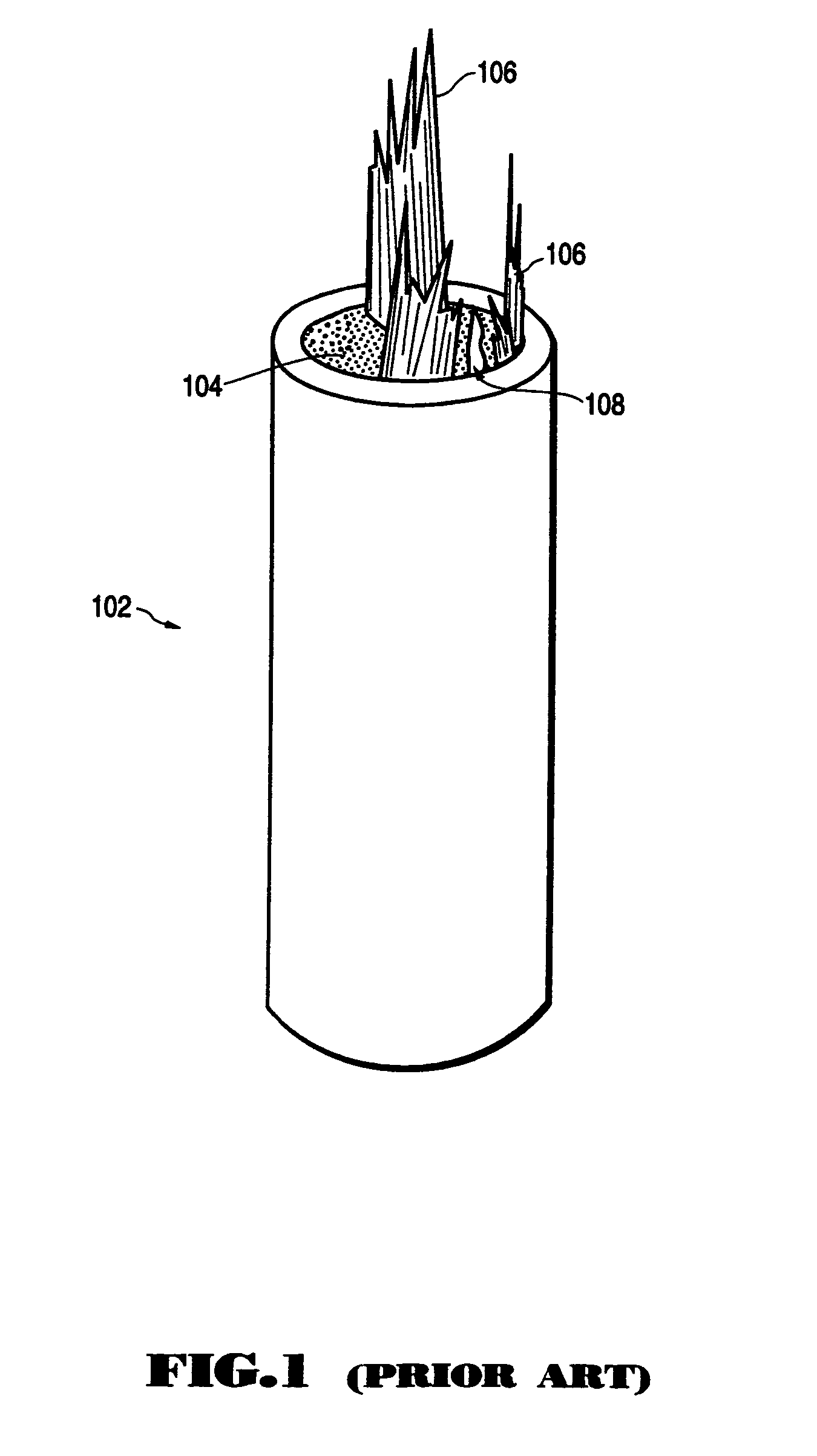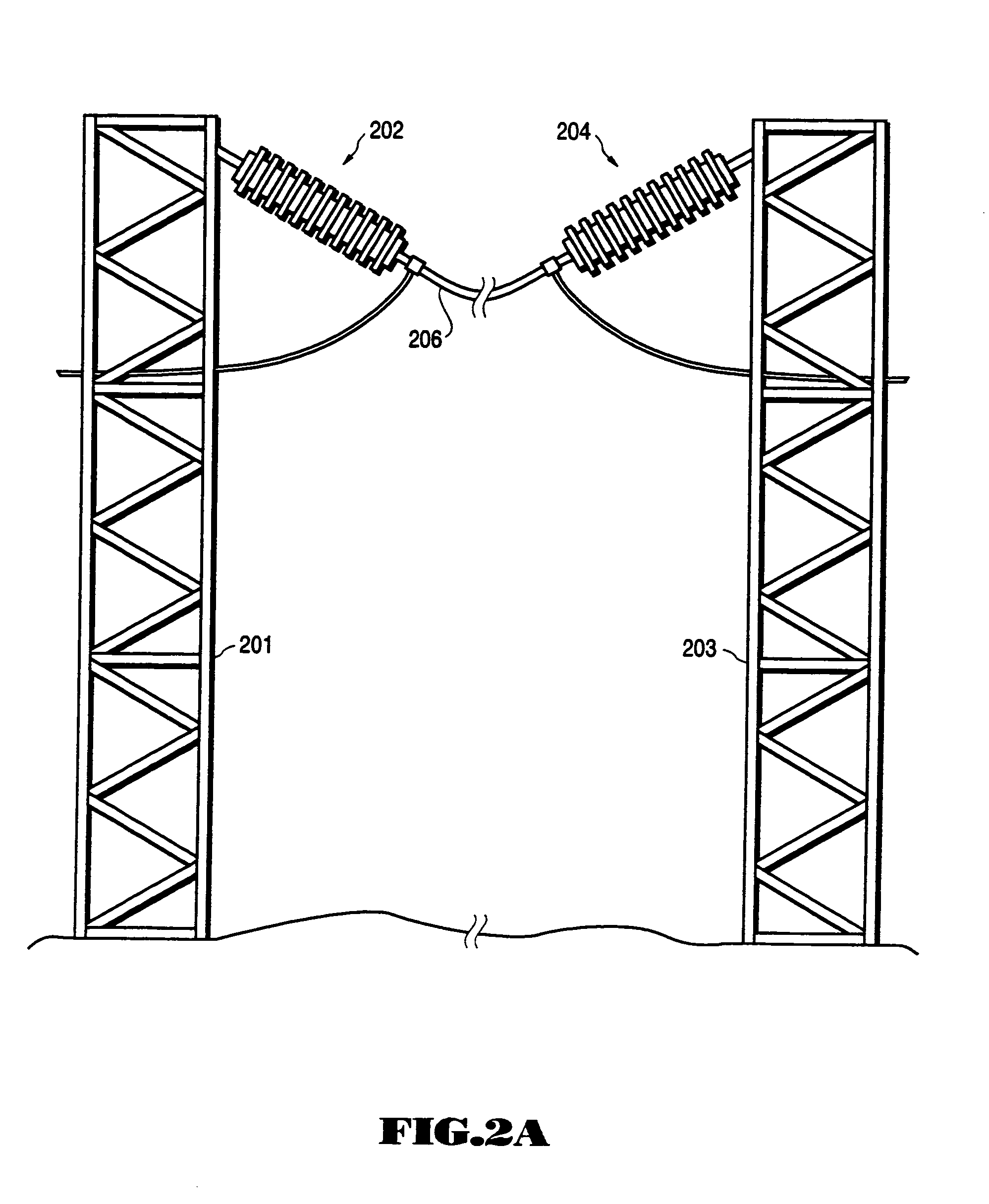Indicators for early detection of potential failures due to water exposure of polymer-clad fiberglass
a polymer-clad fiberglass and potential failure technology, applied in the direction of threaded fasteners, bolts, transportation and packaging, etc., can solve the problems of composite insulators being vulnerable to certain failure modes, insulators can suffer mechanical failure of rods, ceramic insulators, etc., and achieve the effect of longer lasting
- Summary
- Abstract
- Description
- Claims
- Application Information
AI Technical Summary
Benefits of technology
Problems solved by technology
Method used
Image
Examples
Embodiment Construction
[0030]A composite insulator or vessel containing an oil soluble chemical dopant for providing early warning of impending failure due to exposure of the fiberglass rod or glass-reinforced resin material to the environment is described. In the following description, for purposes of explanation, numerous specific details are set forth in order to provide a thorough understanding of the present invention. It will be evident, however, to one of ordinary skill in the art, that the present invention may be practiced using variants of these specific details. In other instances, well-known structures and devices are shown in block diagram form to facilitate explanation. The description of preferred embodiments is not intended to limit the scope of the claims appended hereto.
[0031]Lightweight composite insulators were developed in the late 1950s to replace ceramic insulators for use in high capacity (100's of kilovolt) power transmission lines. Such insulators featured great weight reduction,...
PUM
| Property | Measurement | Unit |
|---|---|---|
| molar concentration | aaaaa | aaaaa |
| core diameter | aaaaa | aaaaa |
| pH | aaaaa | aaaaa |
Abstract
Description
Claims
Application Information
 Login to View More
Login to View More - R&D
- Intellectual Property
- Life Sciences
- Materials
- Tech Scout
- Unparalleled Data Quality
- Higher Quality Content
- 60% Fewer Hallucinations
Browse by: Latest US Patents, China's latest patents, Technical Efficacy Thesaurus, Application Domain, Technology Topic, Popular Technical Reports.
© 2025 PatSnap. All rights reserved.Legal|Privacy policy|Modern Slavery Act Transparency Statement|Sitemap|About US| Contact US: help@patsnap.com



